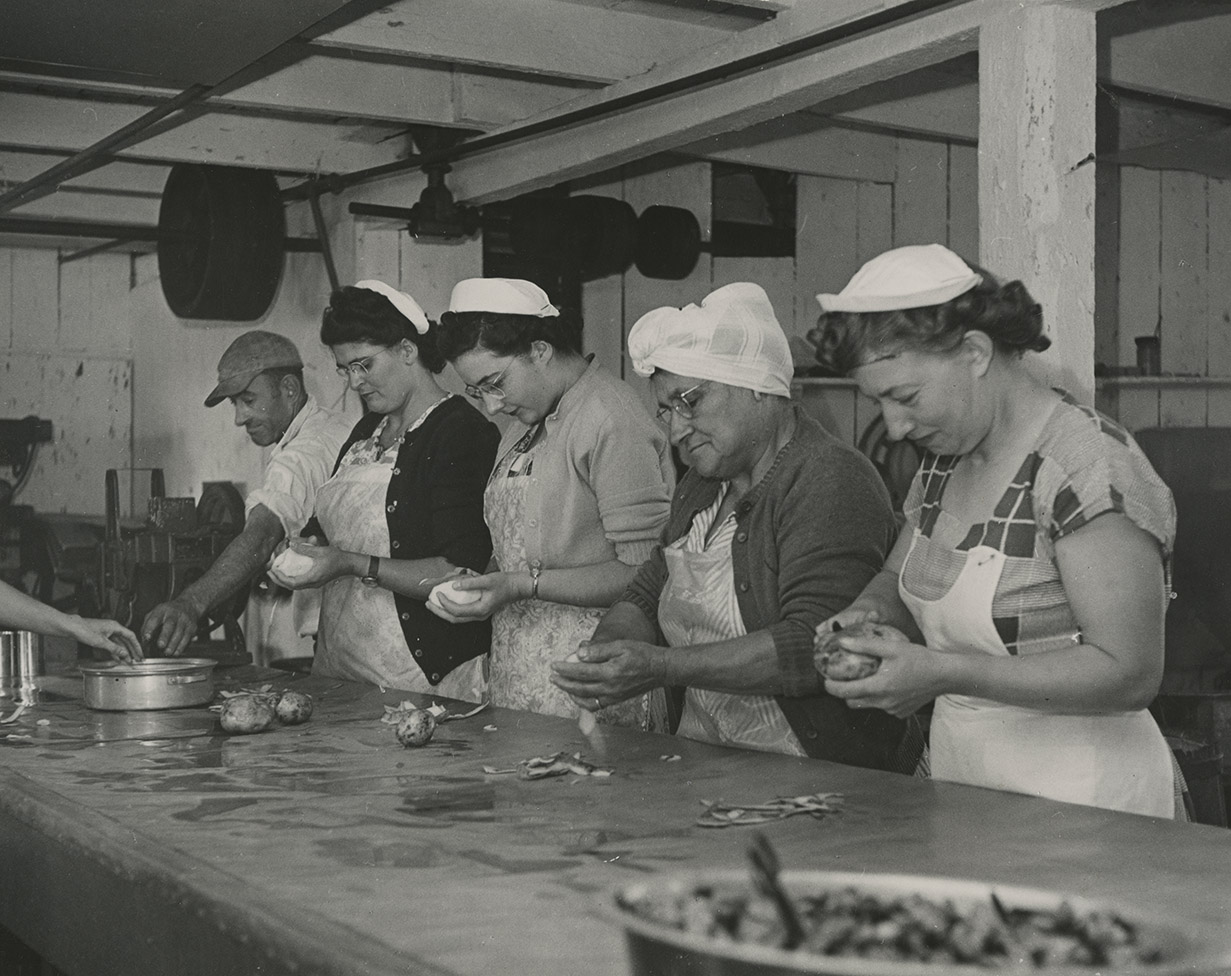Council of Nova Scotia Archives
Centre Acadien, Université Sainte-Anne
Women peeling potatoes for canned clam chowder at the Frank E. Davis Fish Plant in New Edinburgh, NS
Women at home and in the workforce – For the past 150 years, the role of women in the home and in the workforce has been constantly evolving. At the time of Confederation, occupations for women outside the home were quite limited. The most important role was that of the midwife (sage-femme). Because many communities were isolated and Clare was served by only one family physician, each community had its midwife. The fee for a midwife assisting at a delivery, ca. 1880, was $2.00. Occupations listed for widows in census records at the time were “keeps boarding house” or “innkeeper” or “storekeeper”. Women did not then have the right to vote but they could own, buy, and sell property in certain circumstances.
Women had their traditional roles in the orderly running of a busy household, including all aspects of food preparation and the care of children. Because extended families often lived under one roof, the woman of the house was also usually responsible for the care of any elderly parents and relatives, including in-laws. In addition, activities we might today call arts and crafts were important, everyday domestic chores: sewing, dyeing, carding and spinning wool, knitting items for winter wear, making quilts, and braiding and hooking rugs. Utilitarian items were skillfully embellished with crochet, embroidery, and cross-stitch.
In the early to mid-1900s, the male head of a household would spend the entire winter at logging camps. Back at the family farm, daily chores such as bringing in the firewood and the care and feeding of animals fell to the woman, particularly if there were no older children to help. Some women worked at the cookhouses of the winter logging camps. In some instances, the entire family would move with the father to the logging camp for the winter.
By the mid-1950s, a number of paid occupations for women were long-established: teacher, secretary, telephone switchboard operator, postmistress, and factory worker.
Featured in the photo is a group of women peeling potatoes for canned clam chowder at the Frank E. Davis Fish Plant in New Edinburgh, ca. 1951. At the date of the photo, the Frank E. Davis Fish Plant was managed by Timothée Doucet (later, it was run by his son Georges).
Topic: Commercial Enterprises and other livelihoods
Date: Sep-51
Reference: John Collier Collection Centre Acadien Photo 33
For more information, visit the Centre Acadien website.


